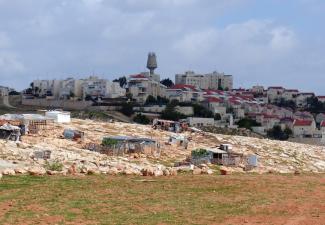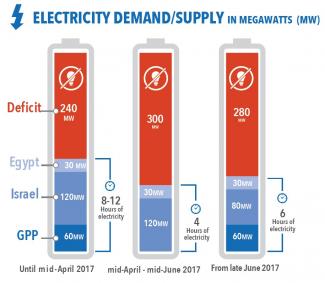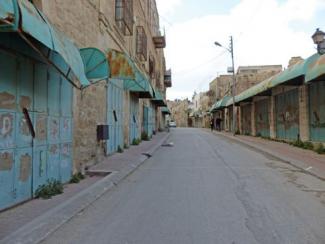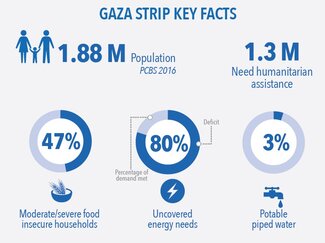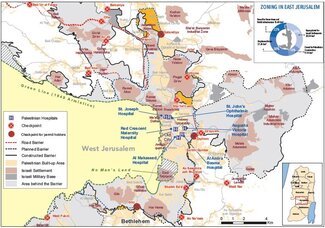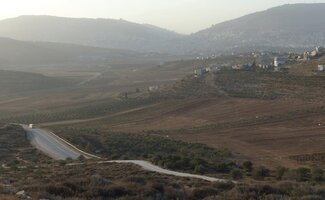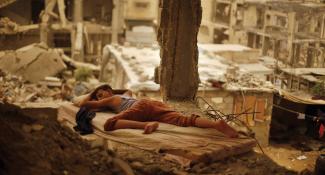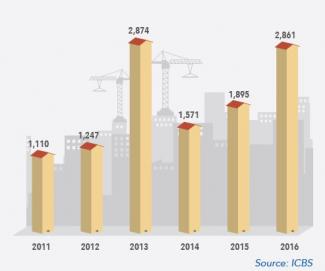Over 60 percent of the West Bank is considered Area C, where Israel retains near exclusive control, including over law enforcement, access and movement, and planning and construction. Some 300,000 Palestinians live in 532 residential areas located partially or fully in Area C, alongside 400,000 Israeli settlers residing in approximately 230 settlements, some of them (“outposts”) established without the formal approval by the Israeli authorities, but with their support.
Humanitarian facts and figures
This publication brings together a series of factsheets that were published by OCHA over the course of the past five years, highlighting different issues of humanitarian concern in the occupied Palestinian territory (oPt). The facts and figures have been reviewed and updated for this compilation, which comes on the occasion of the 50th anniversary of the start of Israel’s military occupation.
In this document
In June 2007, following open hostilities between Fatah and Hamas, the latter took control of the Gaza Strip, initiating a divide between the West Bank-based Palestinian Authority (PA) and the de-facto Hamas authorities in Gaza. In October 2017, the two parties reached a reconciliation agreement and subsequently, Hamas handed over control of the Palestinian side of the three Gaza crossings to the Government of National Consensus. Most measures adopted by the PA since March 2017, which led to a deterioration of the humanitarian situation, are yet to be reverted.
Between 2009 and 2016, Israeli authorities demolished or seized over 4,800 Palestinian-owned structures in the West Bank, mostly in Area C and East Jerusalem.
Less than 1% of Area C and some 13% of East Jerusalem have Israeli approved plans, allowing Palestinians to apply for building permits.
About two million Palestinians in Gaza are ‘locked in’, unable to access the remainder of the occupied Palestinian territory and the outside world. Movement restrictions imposed by Israel since the early 1990s and which were intensified after the events of June 2007, citing security justifications, have had a profound impact on living conditions in Gaza and fragmented the territorial unity and the economic and social fabric of the oPt. Those eligible for exit permits constitute a small minority, primarily patients, business people and staff of international organizations. The isolation of Gaza has been exacerbated by Egypt’s closure of the Rafah crossing also.
Around 320,000 Palestinians currently reside in East Jerusalem, in addition to 212,000 Israeli settlers who reside in the settlements which have been constructed and expanded since 1967, contrary to international law.
Since 1967, over 14,500 Palestinians have had their Jerusalem residency revoked by the Israeli authorities.
By the end of 2016, there were 572 fixed movement obstacles, including 44 permanently-staffed checkpoints, 52 partially-staffed checkpoints, and 376 roadblocks, earthmounds and road gates. More than 100 additional obstacles, including 18 permanent checkpoints, segregate part of the Israelicontrolled area Hebron city (H2) from the rest of the city.
The Gaza Strip has witnessed three major escalations of hostilities in the last ten years: in December 2008-January 2009; in November 2012; and in June-August 2014. Over 3,800 Palestinians and 90 Israelis were killed in these escalations. The 2014 hostilities were the most intense to date and saw the highest loss of civilian life in Gaza since the beginning of the Israeli occupation in 1967 (1,460 civilian fatalities).
About 250 Israeli settlements have been established across the occupied West Bank since 1967, some of them without the formal approval of the Israeli authorities (“outposts”), but with their support.
Some 611,000 Israelis currently live in settlements, two-thirds of them in Area C and one third in East Jerusalem.
